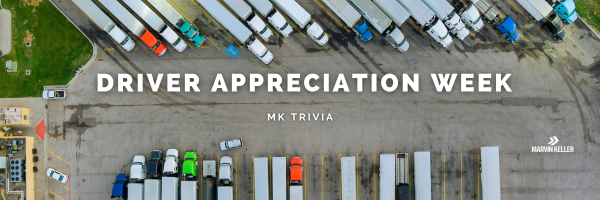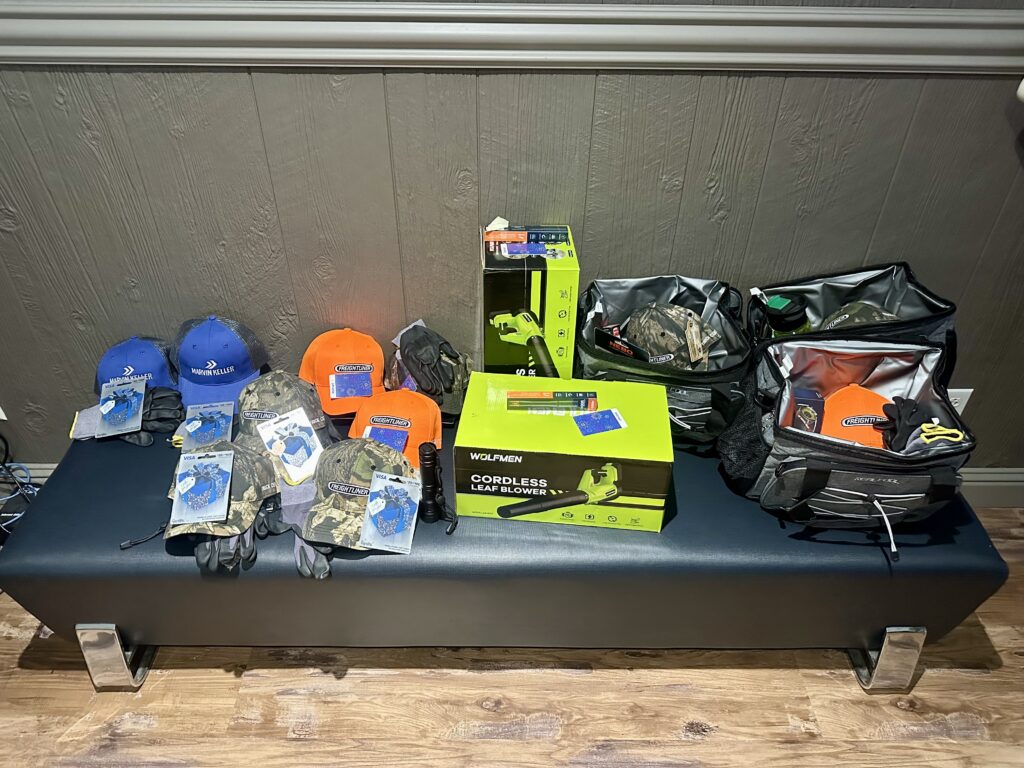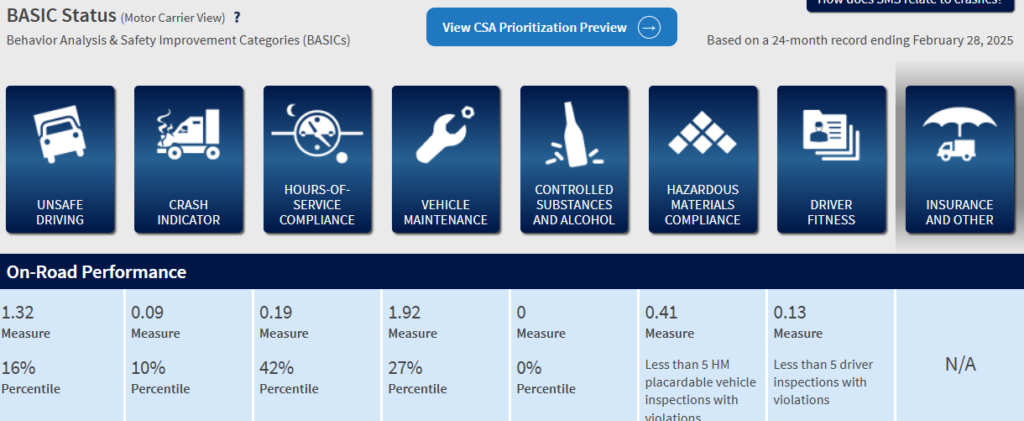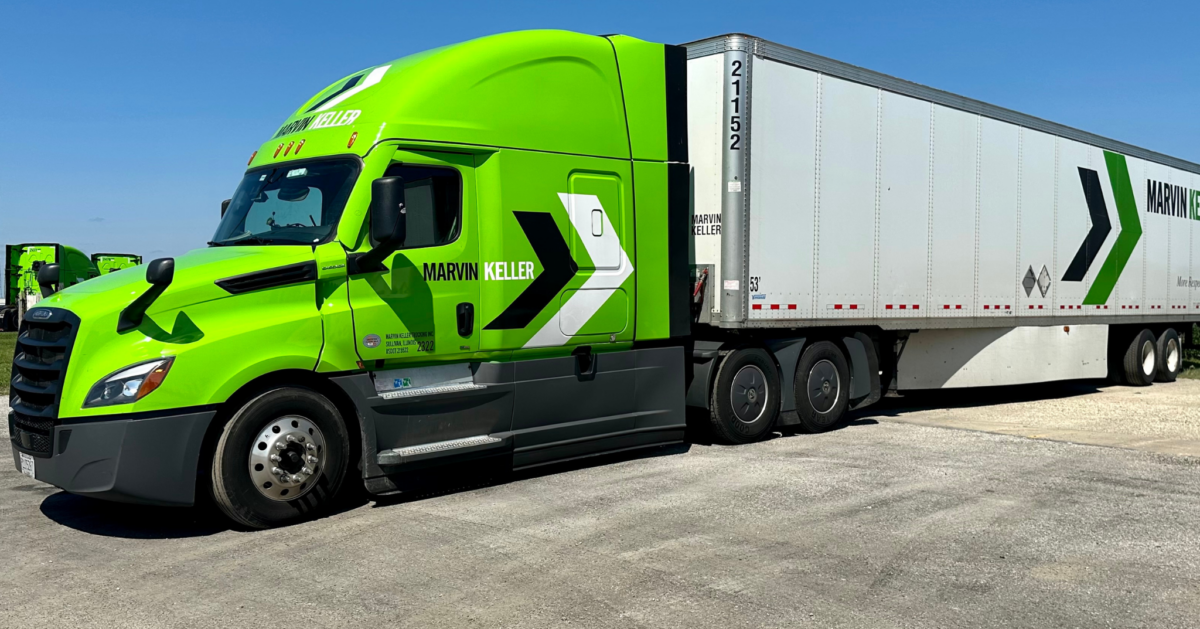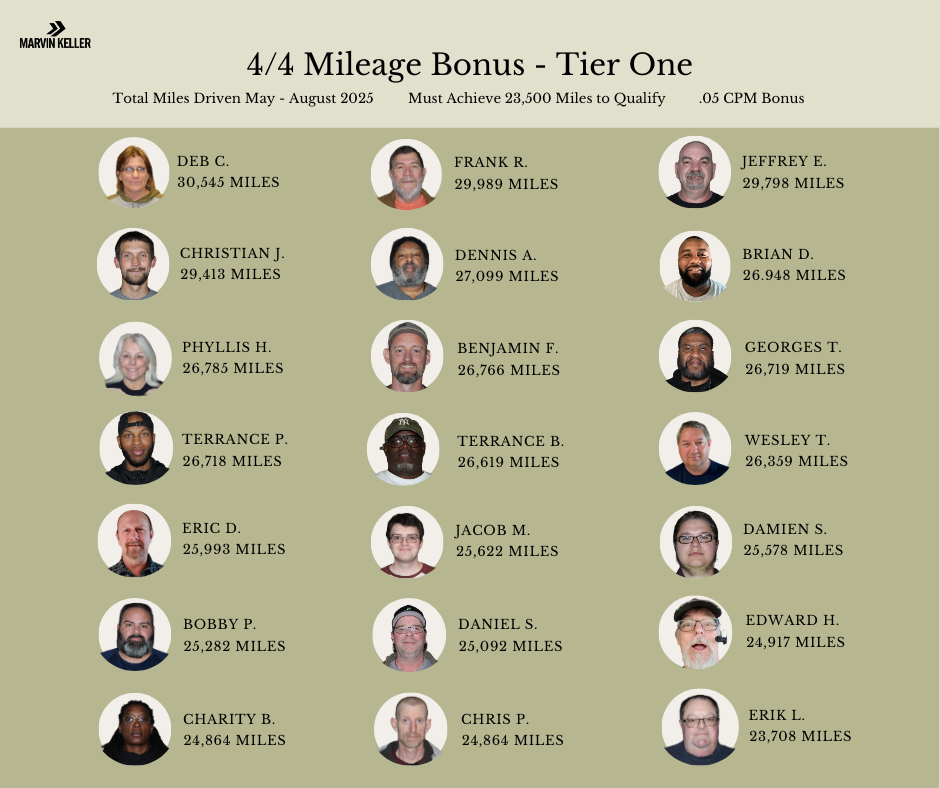As professional drivers, we know that nothing matters more than your safety and the safety of those you share the road with. Every mile you drive represents both your skill and your responsibility. While accidents can happen, most of them are preventable. By understanding the most common causes, we can take proactive steps to reduce risk and keep everyone safe.
Top Causes of Truck Accidents
1. Distracted Driving
Texting, eating, adjusting the radio, or even daydreaming can pull attention from the road. A split second of distraction at highway speeds can have serious consequences.
Prevention: Keep your eyes and mind on the road at all times. If you need to use your phone or grab something, pull over safely first.
2. Fatigue
Long hours and tight schedules can make fatigue a real challenge. Drowsy driving slows reaction times and affects judgment, making it just as dangerous as impaired driving.
Prevention: Take a 15 to 45 minute nap during your break, get quality rest, and speak up if you’re too tired to drive. Your health and alertness come first.
3. Speeding and Following Too Closely
Driving too fast for conditions or tailgating reduces the time you have to react. For a fully loaded truck, the stopping distance is much greater than for passenger vehicles.
Prevention: Always adjust your speed for weather, traffic, and road conditions. Maintain a safe following distance to give yourself time to respond.
4. Improper Lane Changes
Blind spots and quick maneuvers can lead to sideswipe accidents.
Prevention: Signal early, check mirrors twice, and be patient. Remember—four-wheelers may not realize how large your blind spots are.
5. Weather Conditions
Rain, snow, fog, or ice can make roads slippery and visibility poor.
Prevention: Slow down, increase following distance, and use extra caution in bad weather. If conditions become unsafe, it’s always okay to stop and wait it out.
6. Equipment Failures
Tire blowouts, brake issues, and other mechanical problems can cause accidents—often preventable with proper inspections.
Prevention: Complete thorough pre-trip and post-trip inspections, report issues immediately, and never take chances with faulty equipment.
What to Do After an Accident
Even with the best precautions, accidents can still happen. If you find yourself in this situation:
- Prioritize Safety: Pull over to a safe area, engage emergency flashers, place triangles as required, and call 911 if needed.
- Document the Scene: Take photos of vehicles, damage, and surroundings.
- Exchange Information: Gather contact and insurance details from all parties involved.
- File an Accident Report: Complete all required documentation accurately.
- Notify Dispatch Immediately: Keep us informed so we can respond quickly and support you.
The Bottom Line
Safe driving is about awareness, preparation, and making the right choices—even when it takes extra time. Every safe mile is a win for you, our customers, and the motoring public. Thank you for your commitment to safety every time you get behind the wheel.
